
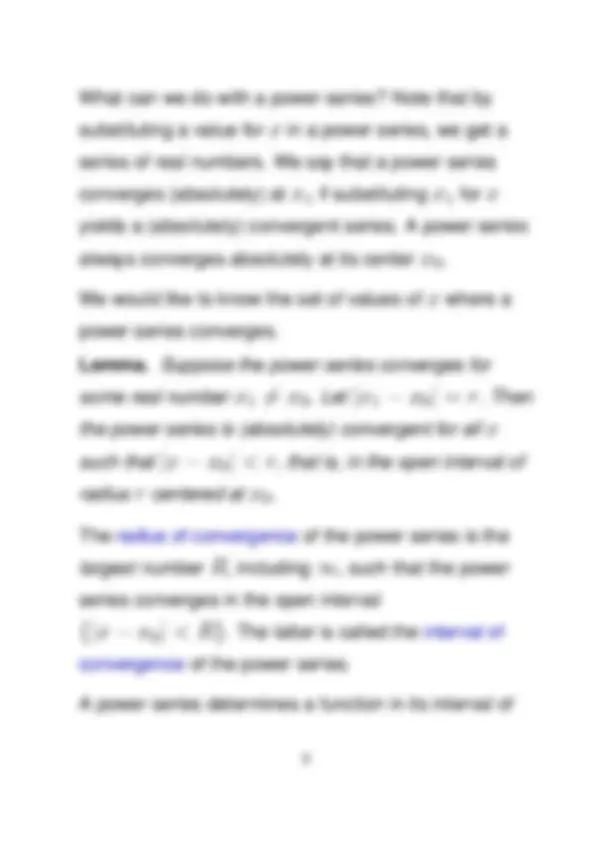
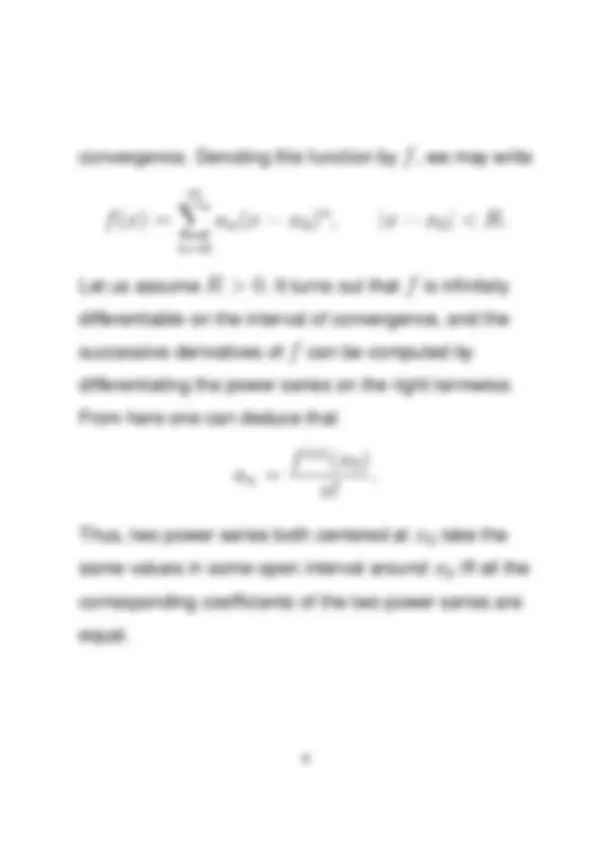
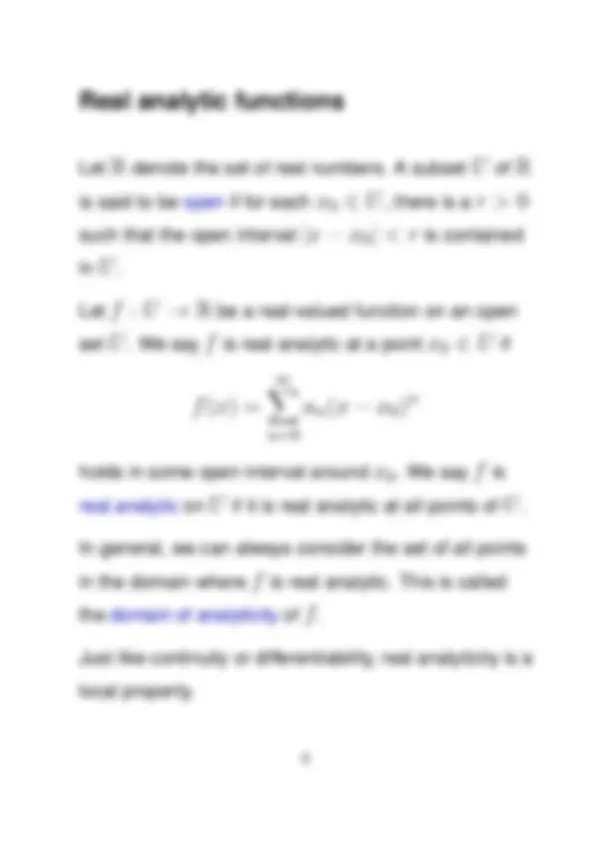
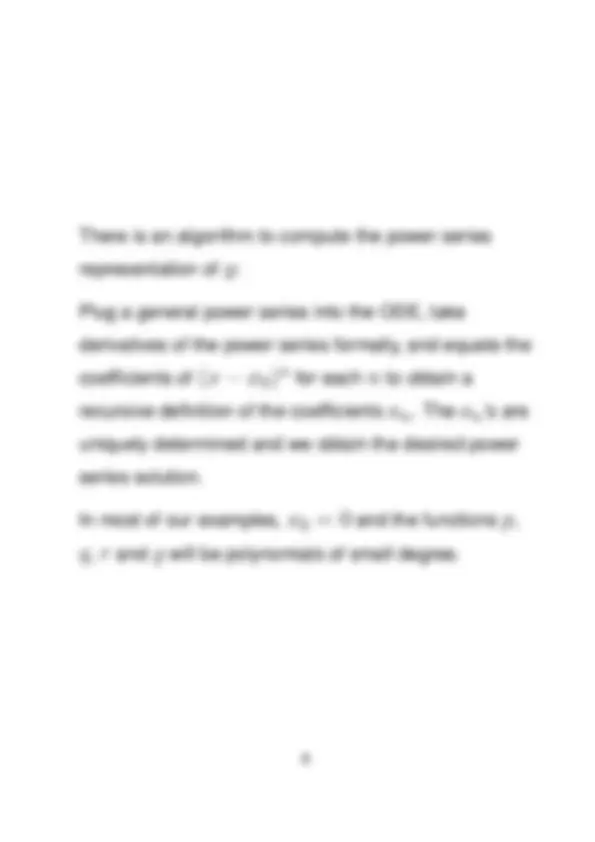
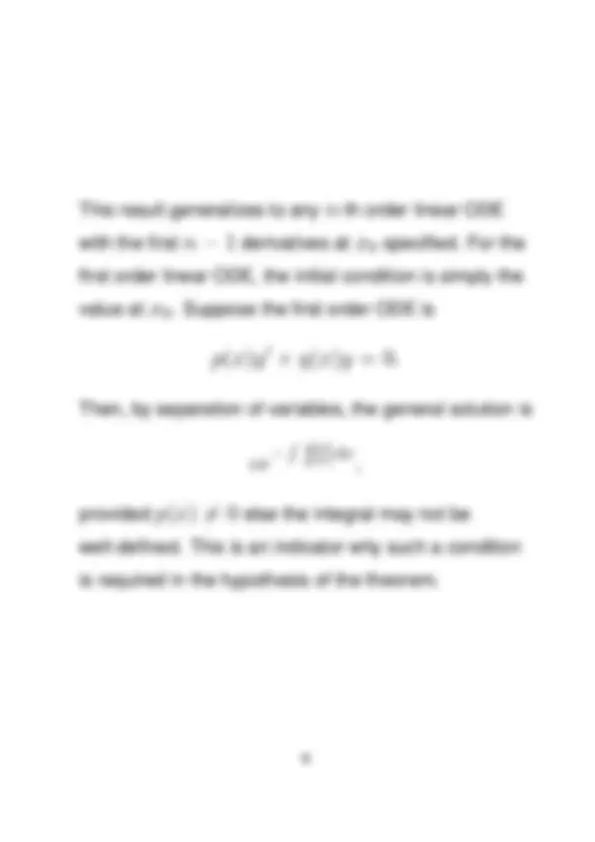
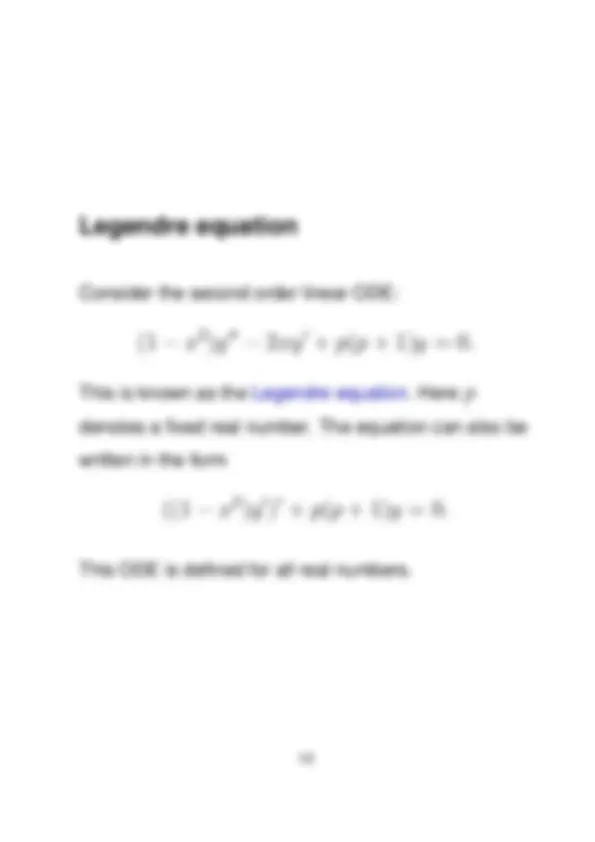
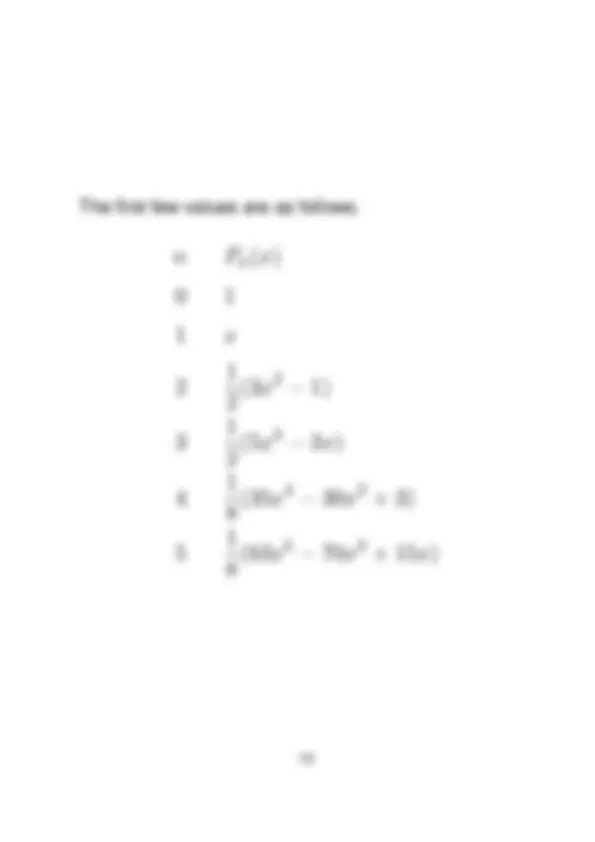
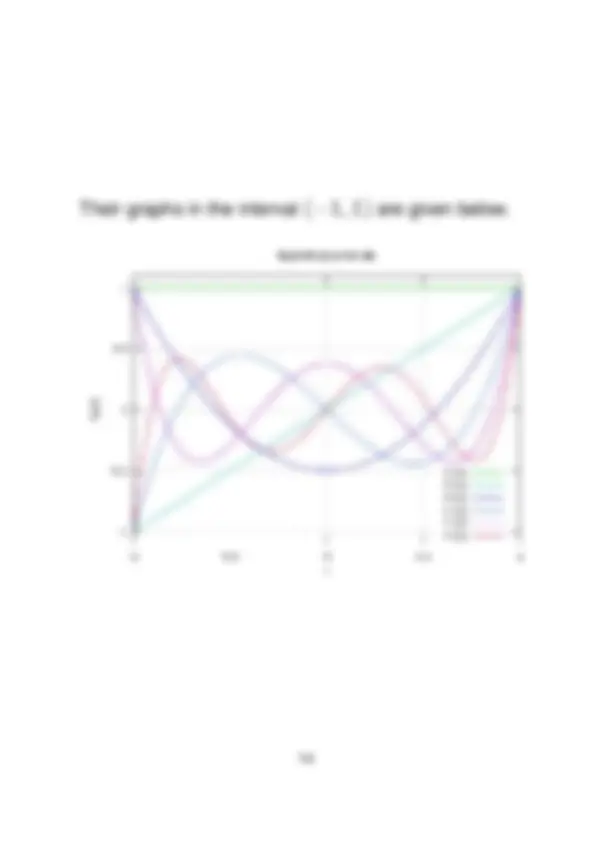
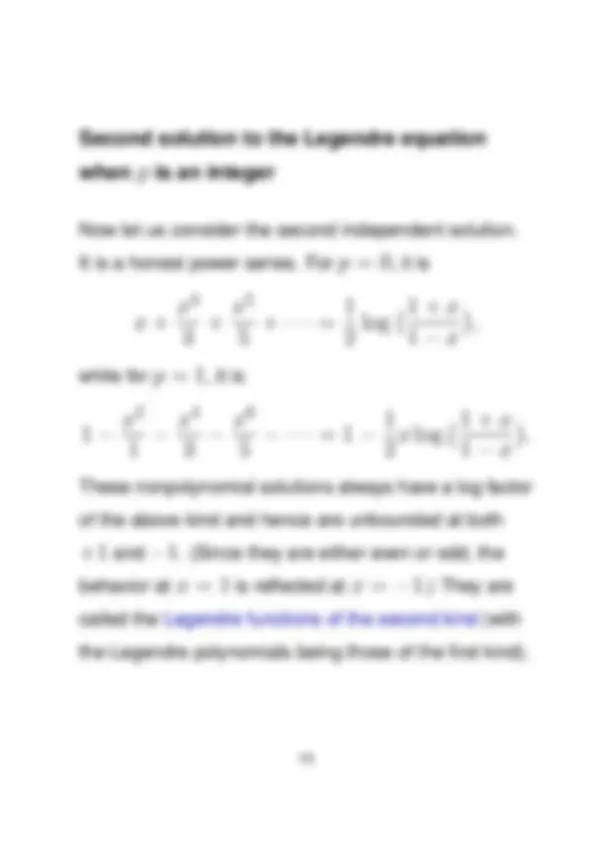
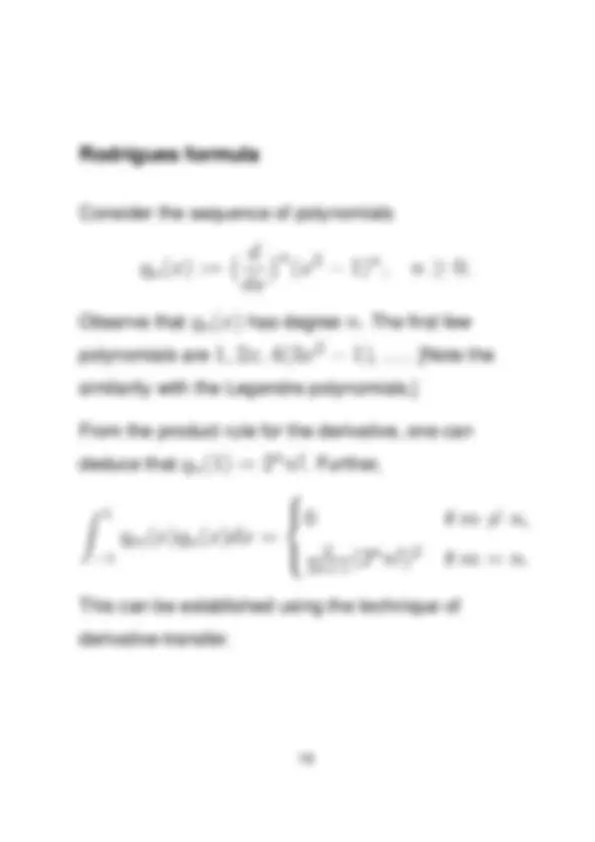
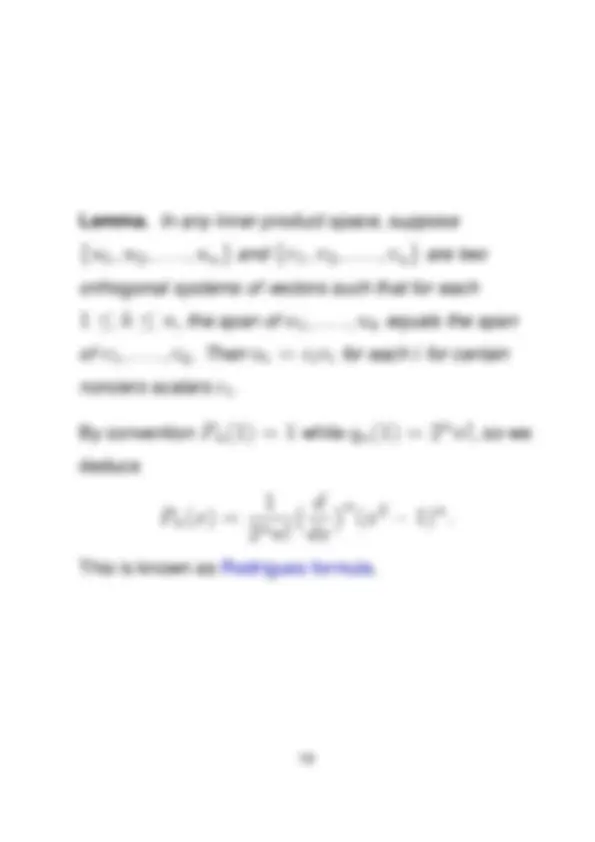
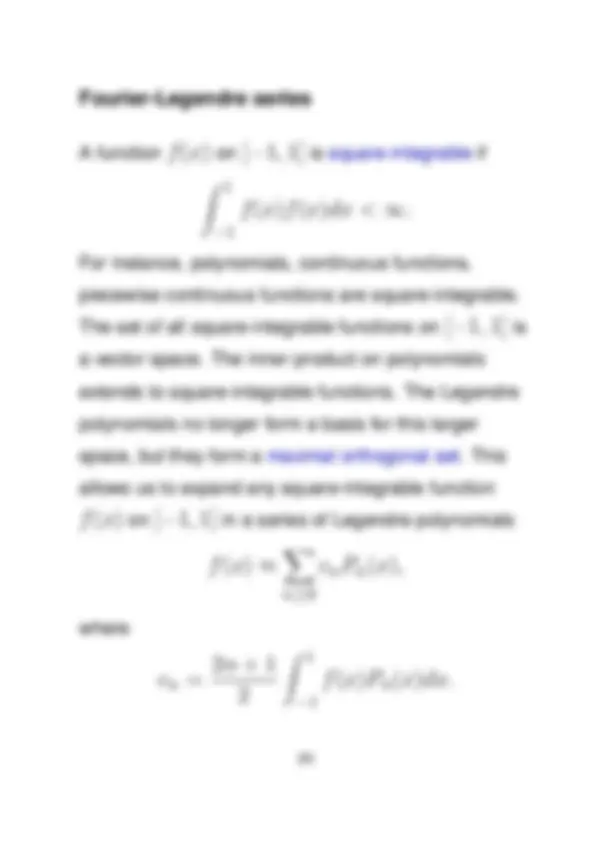
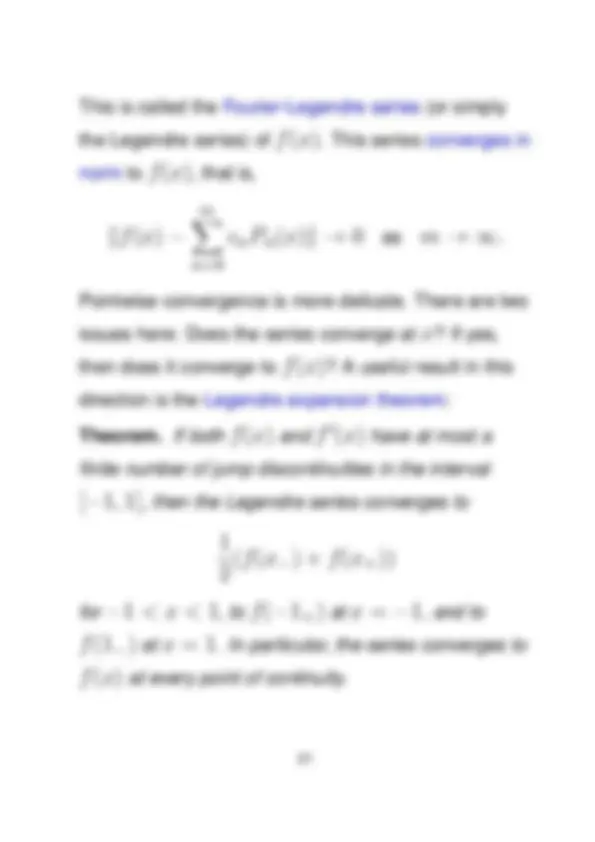
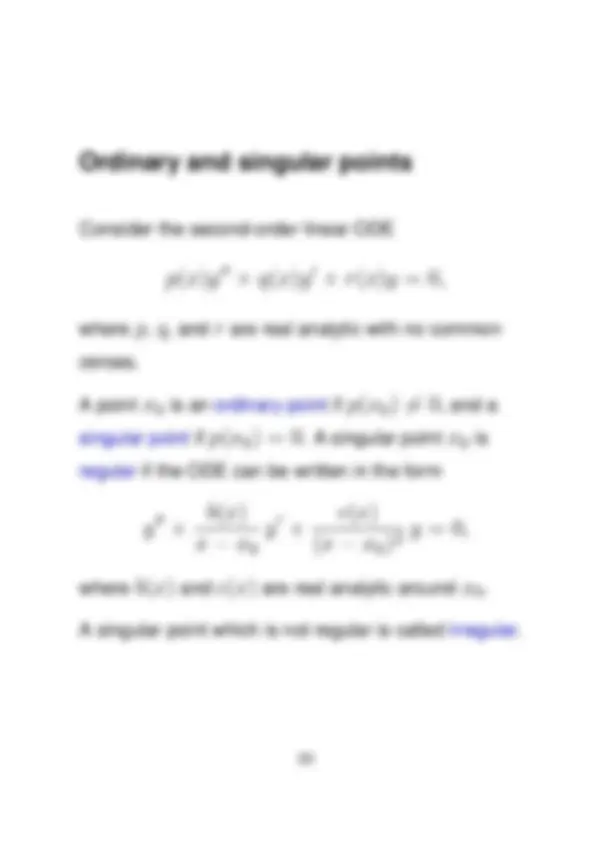
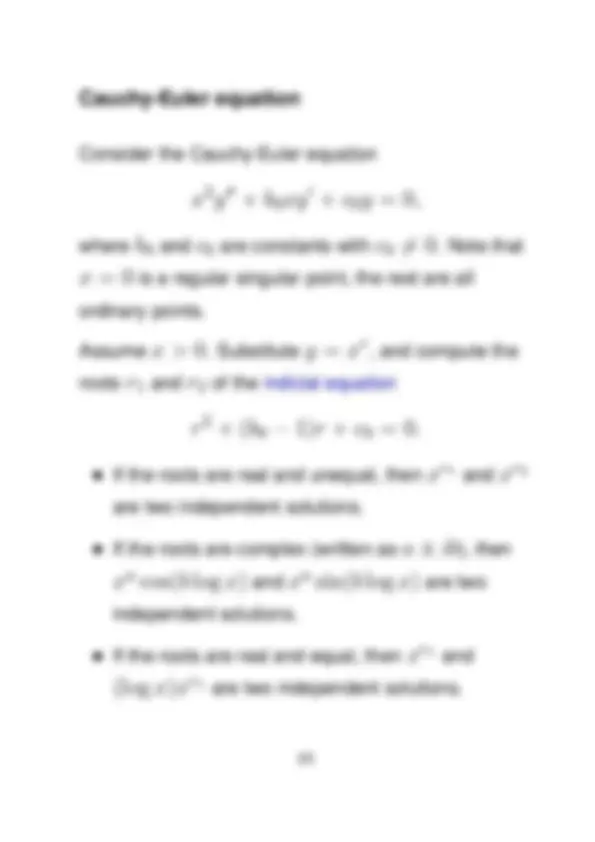
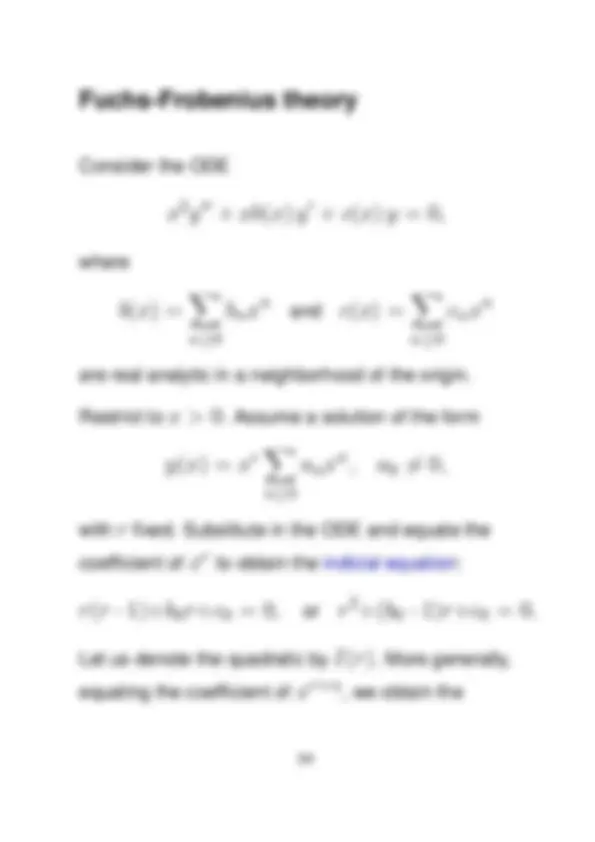
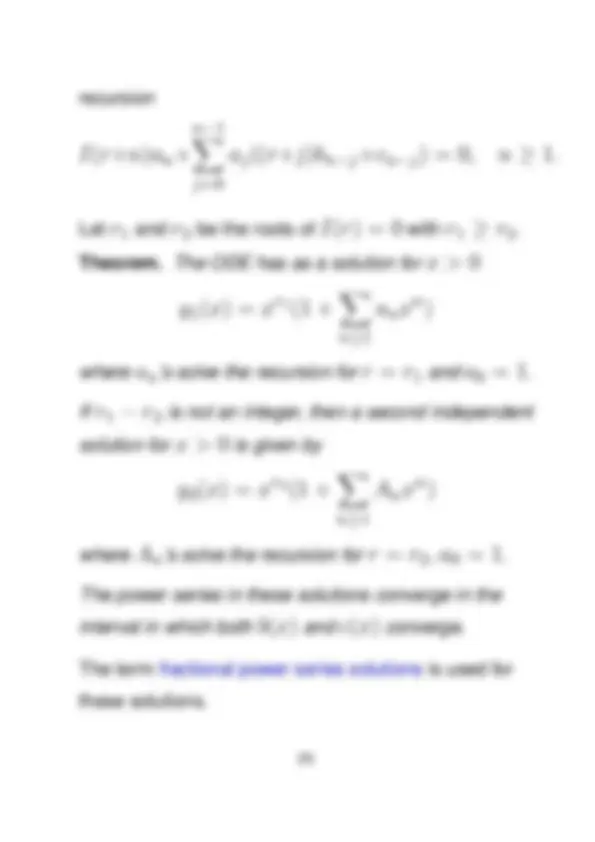
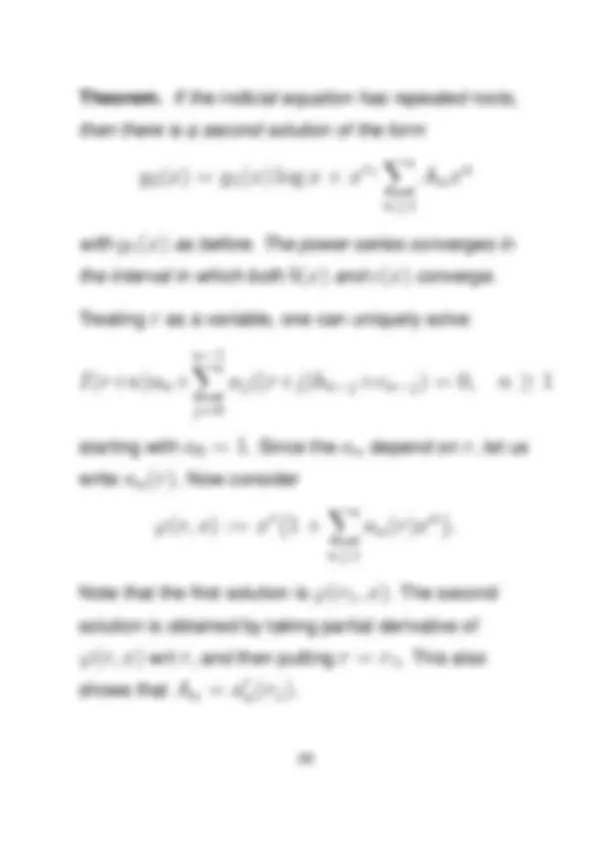
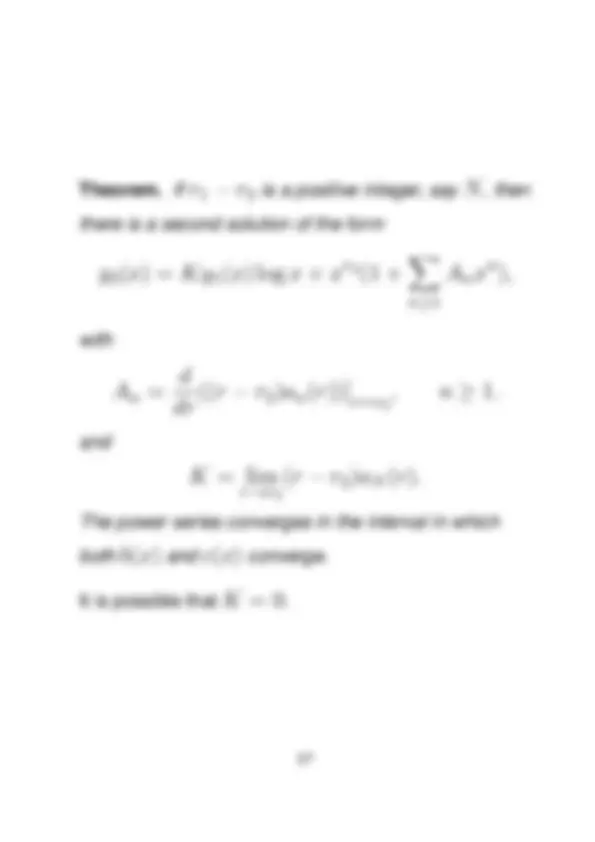
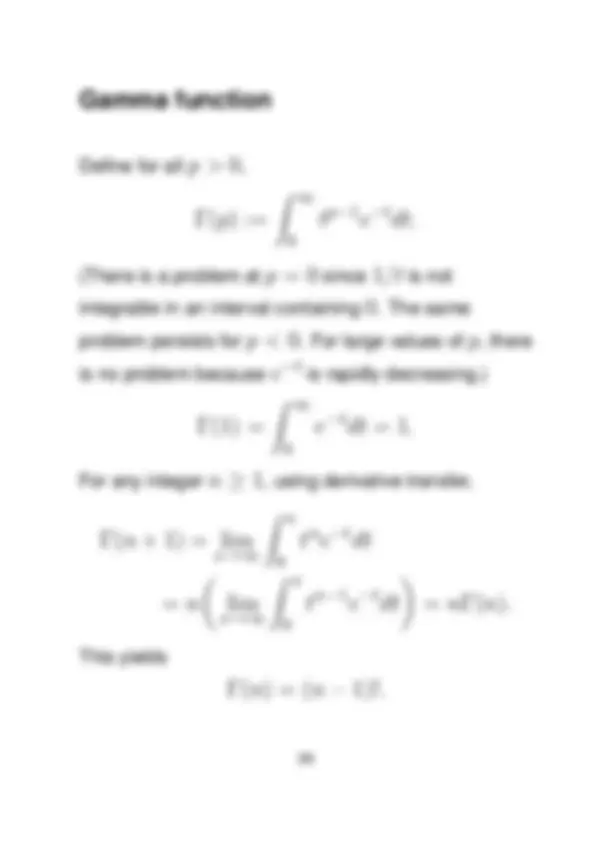
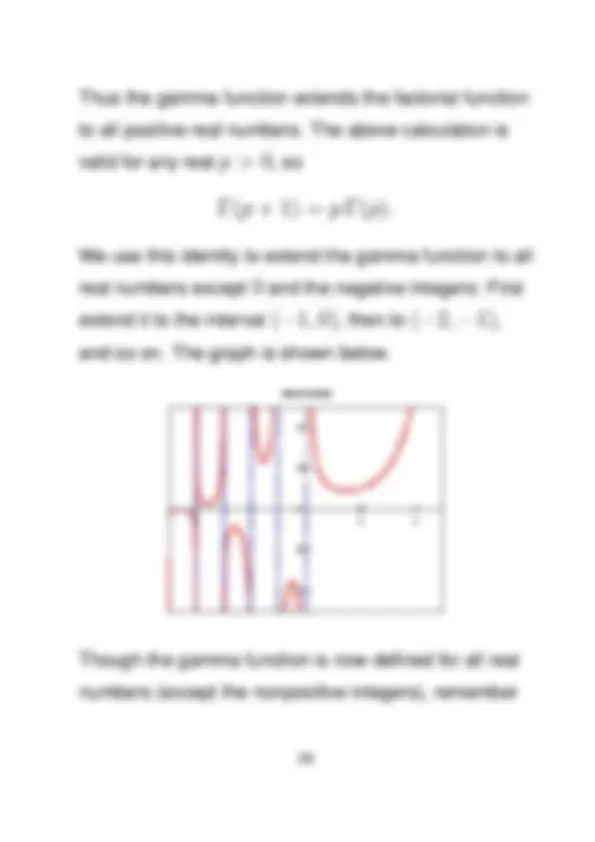
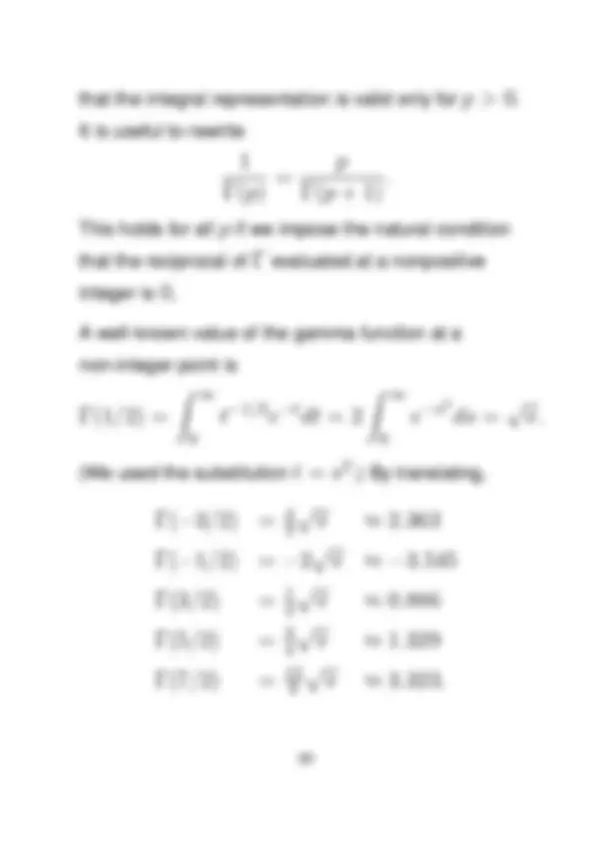
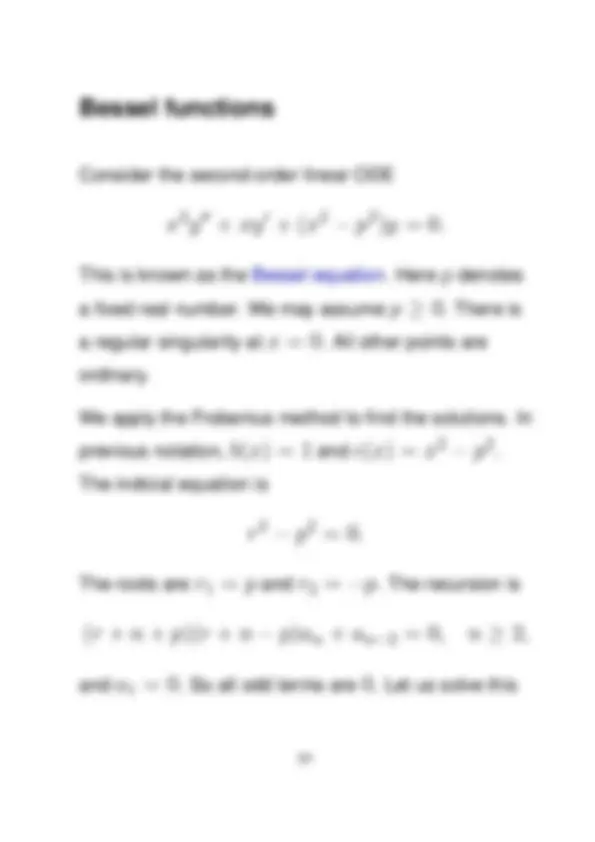
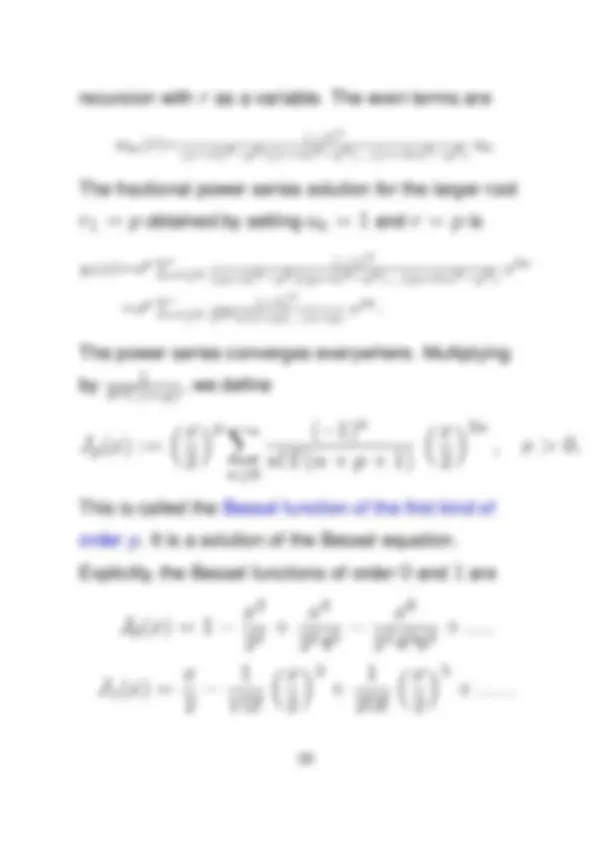
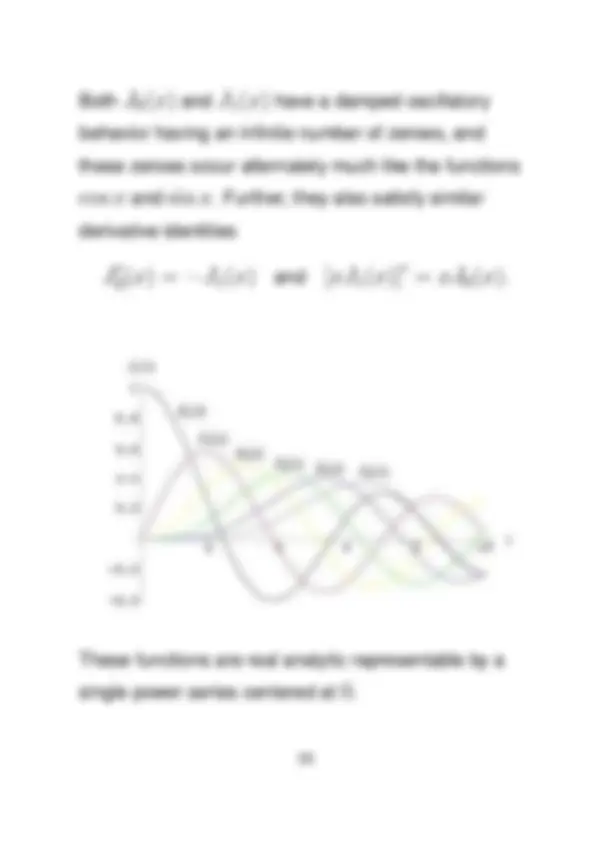
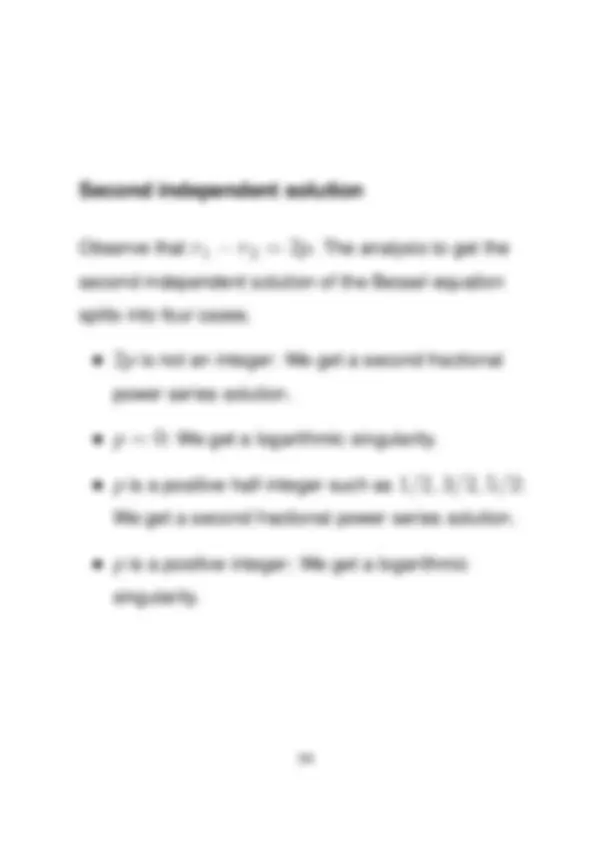
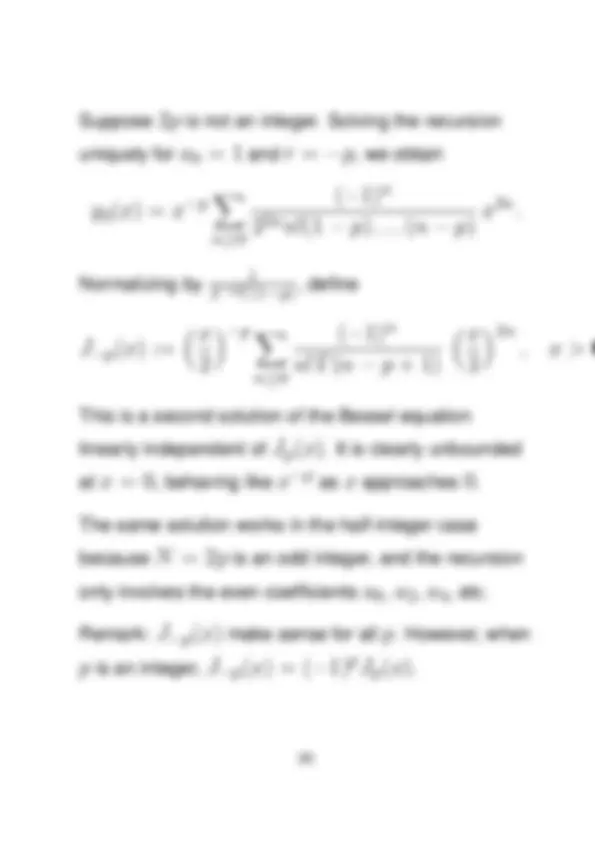
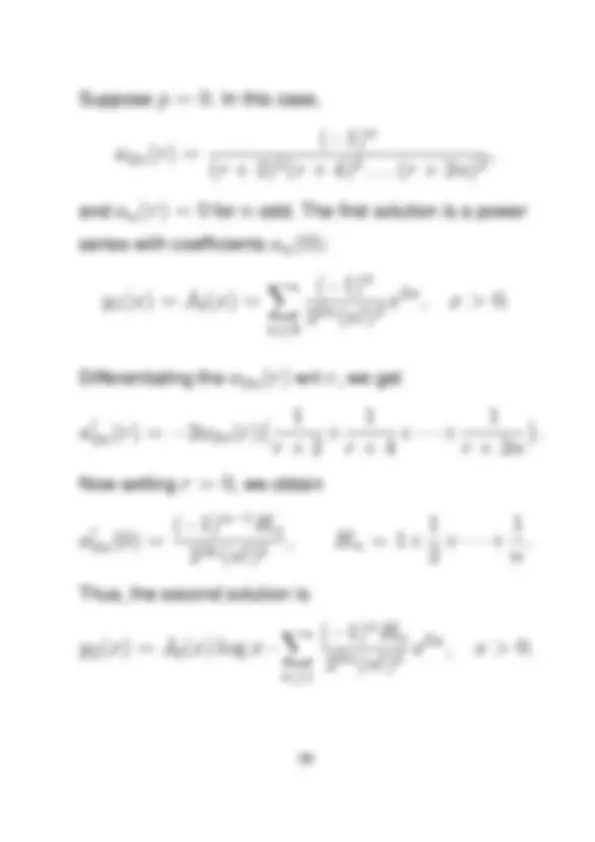
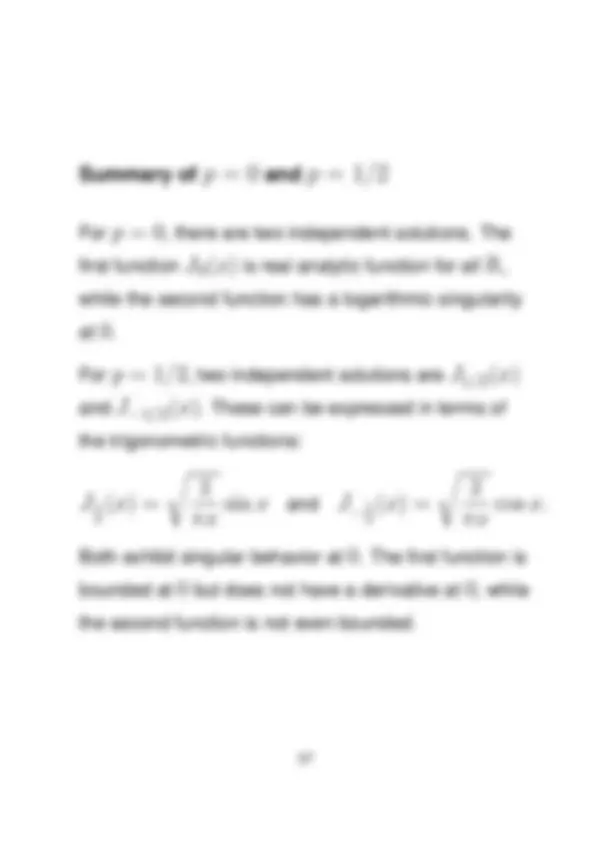
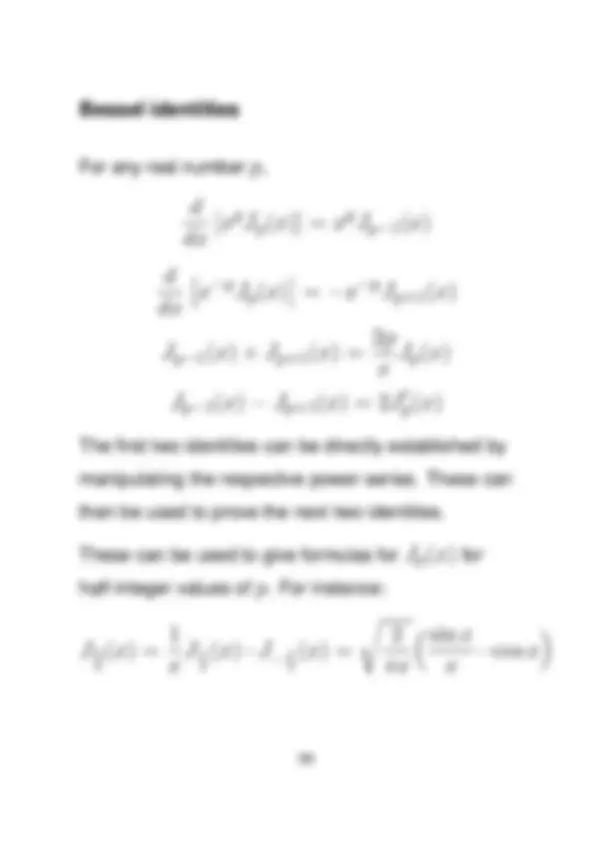
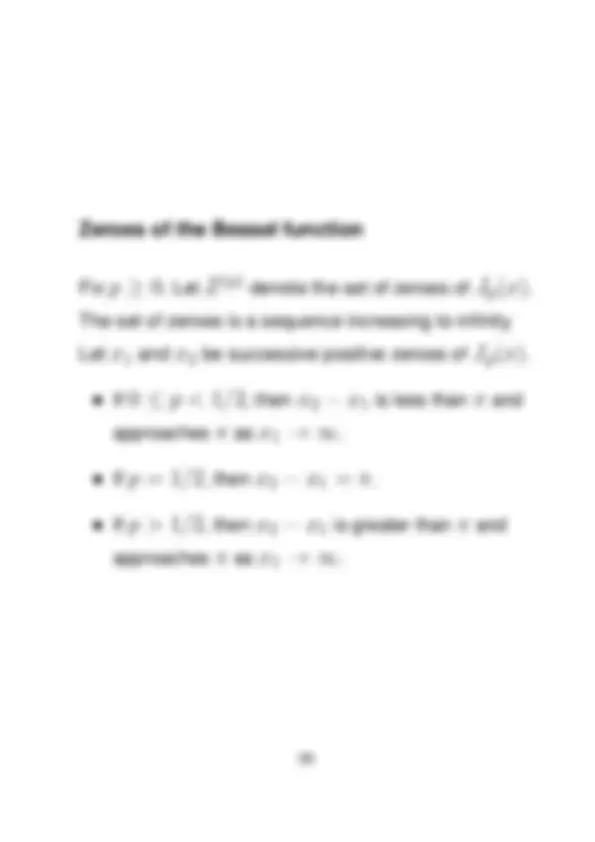
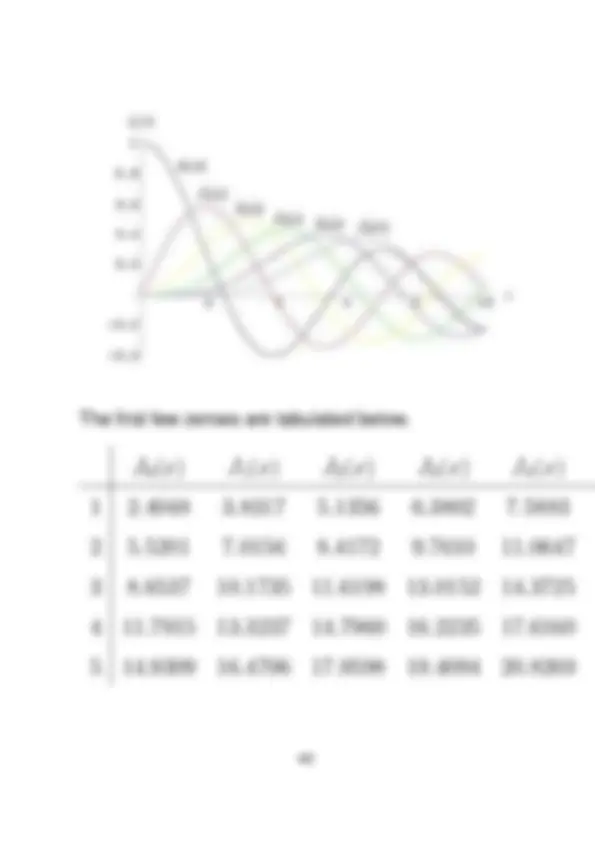
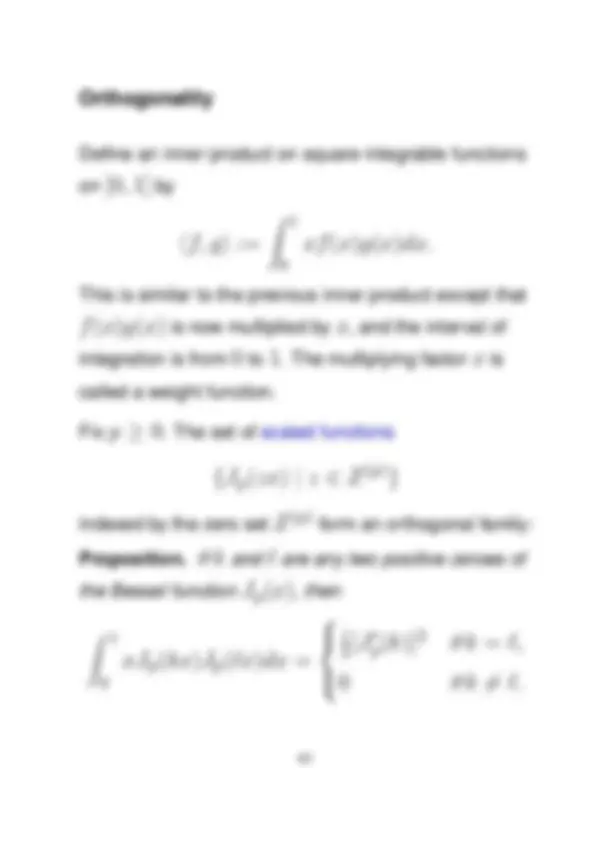
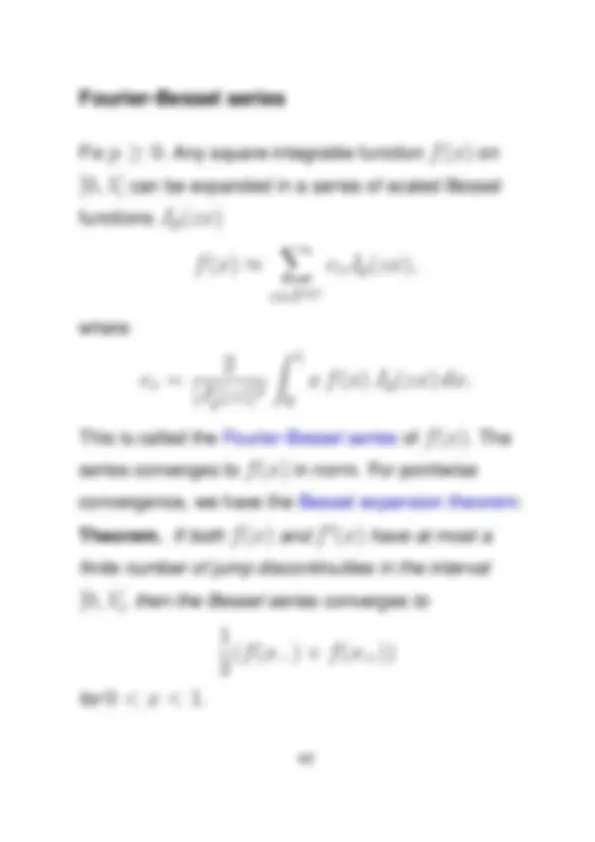
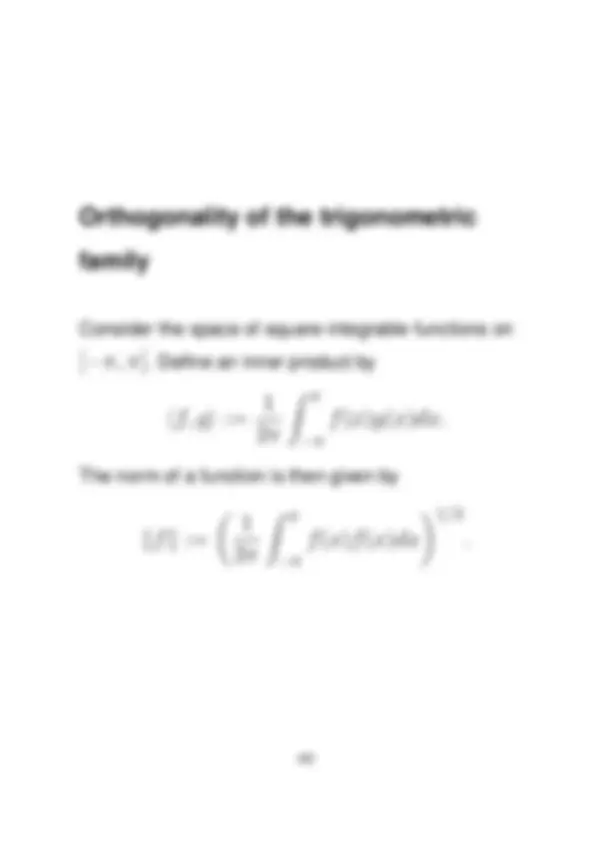
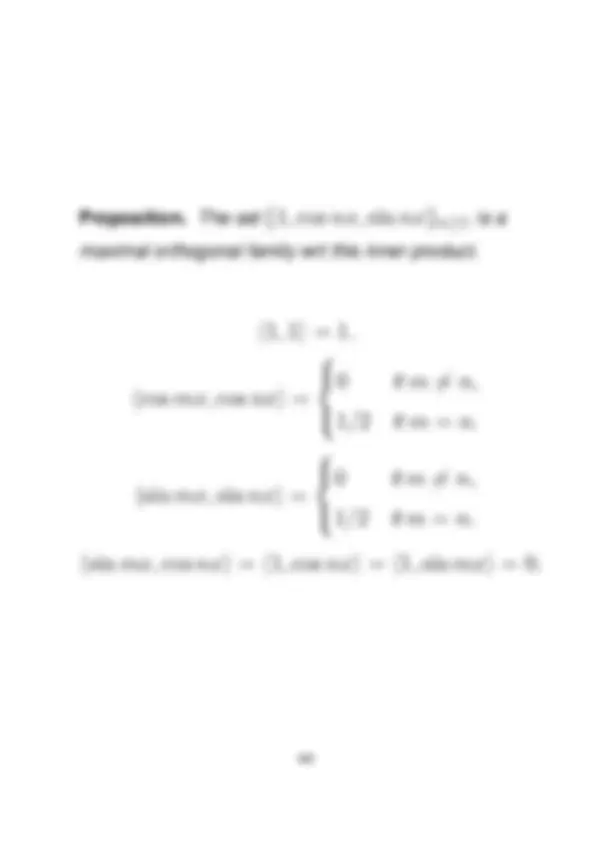
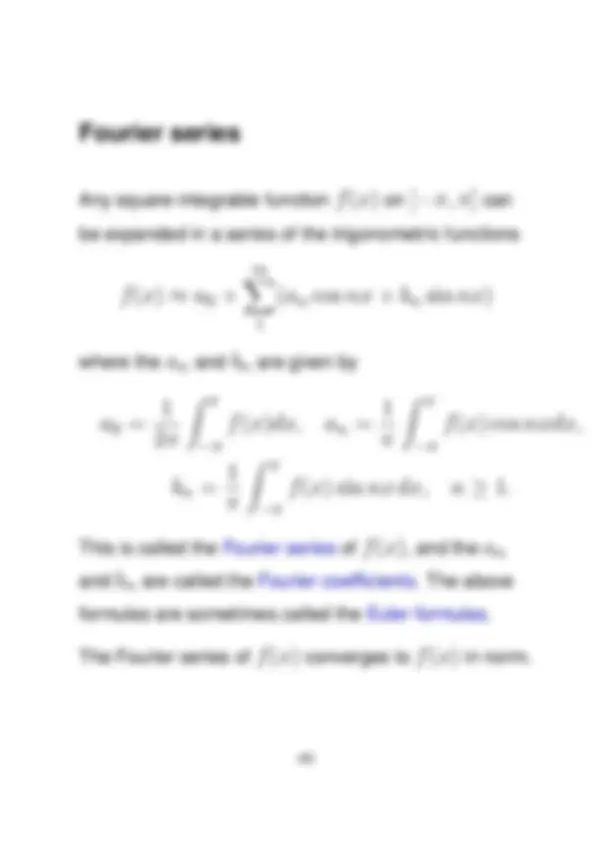
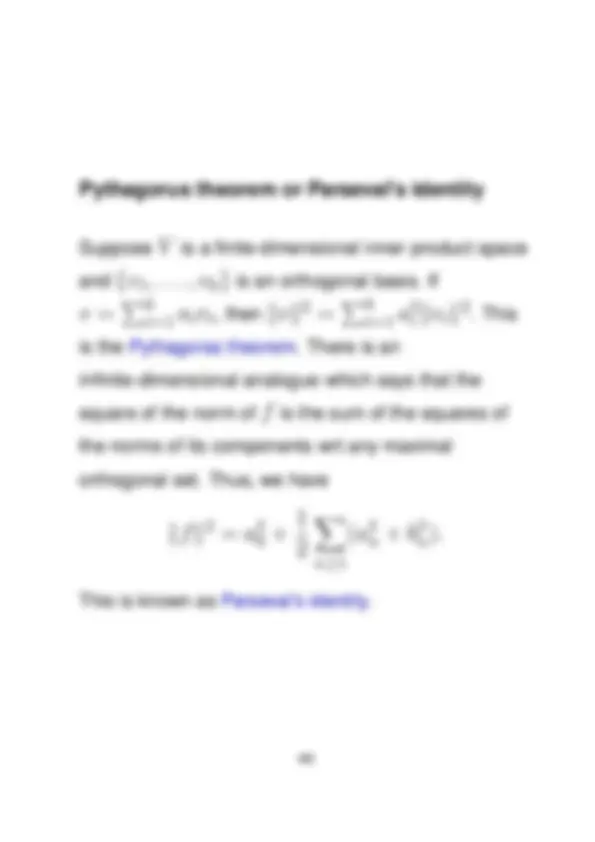
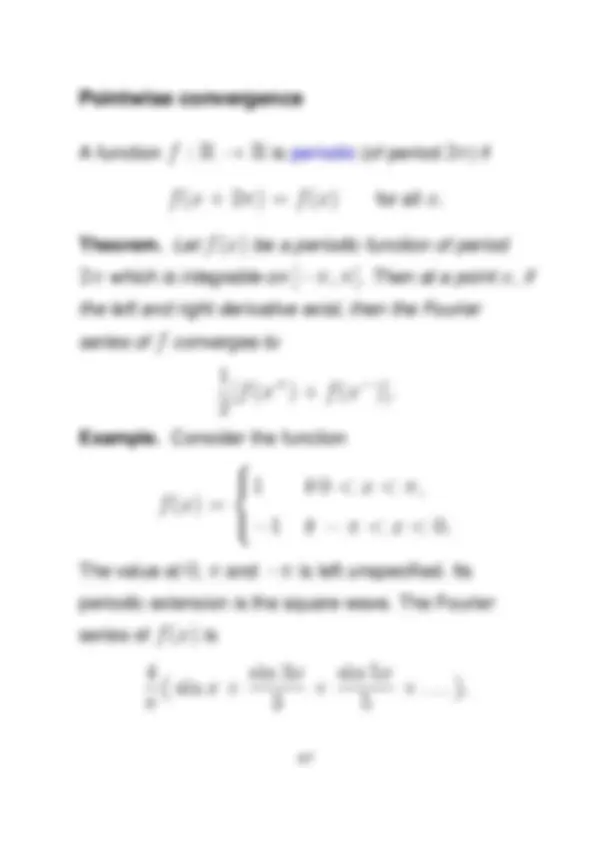
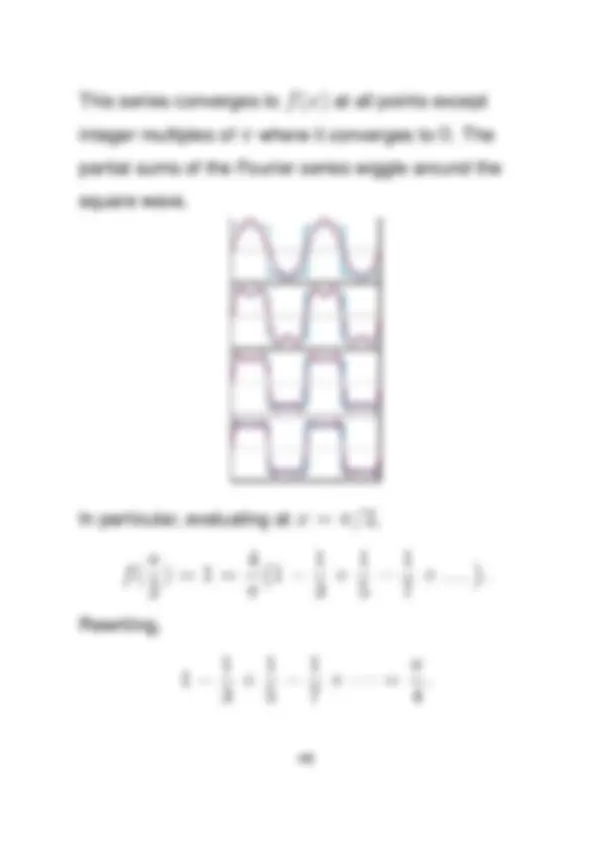
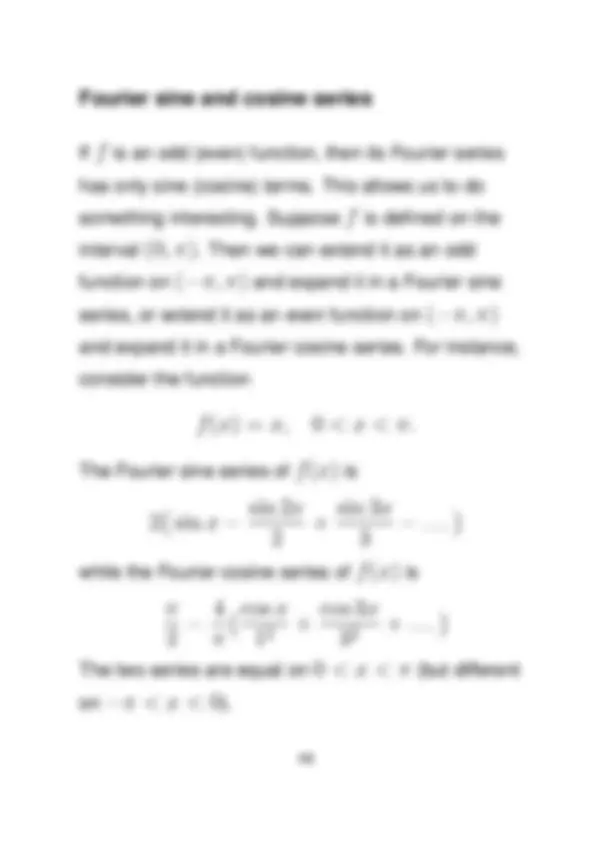
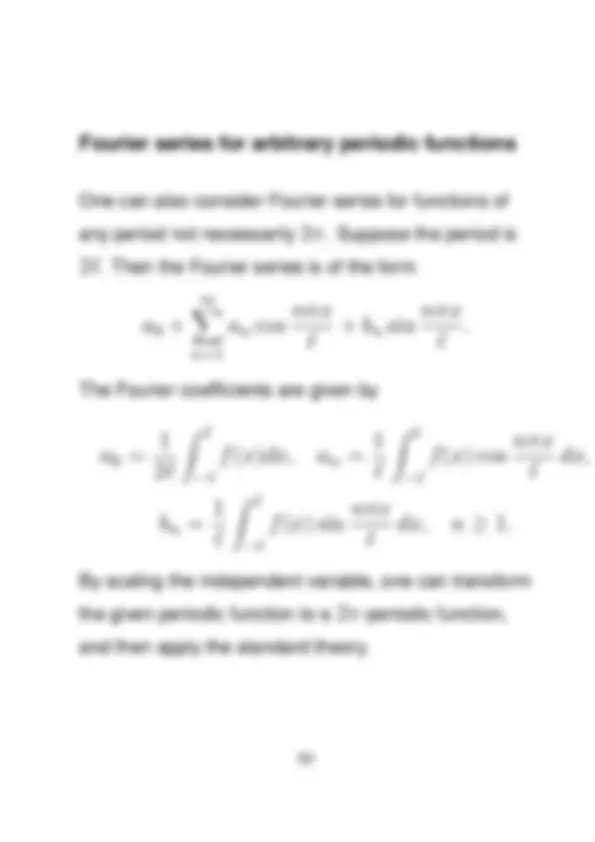
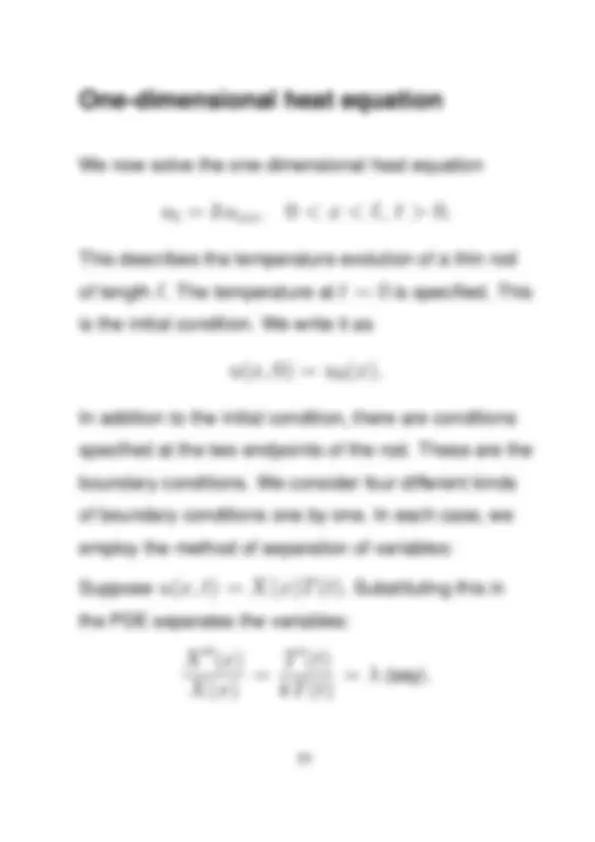
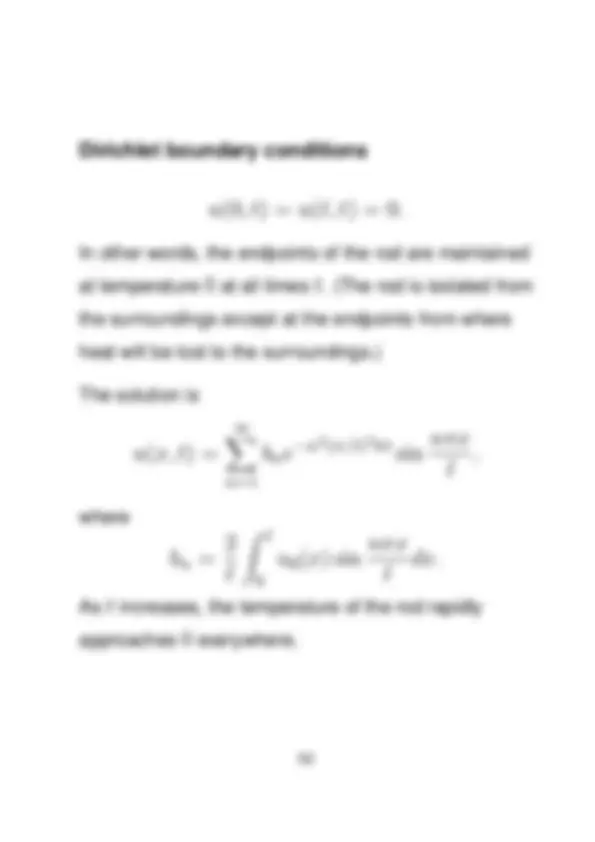
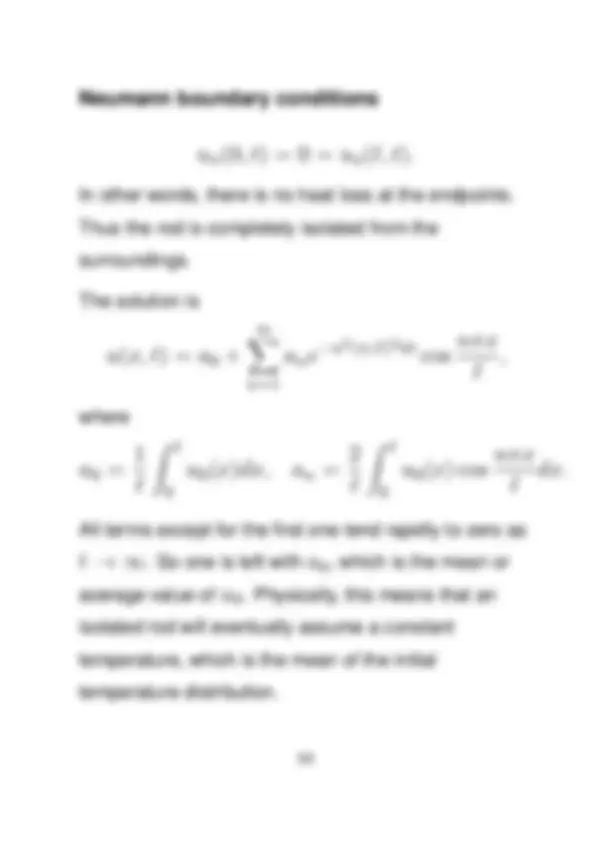
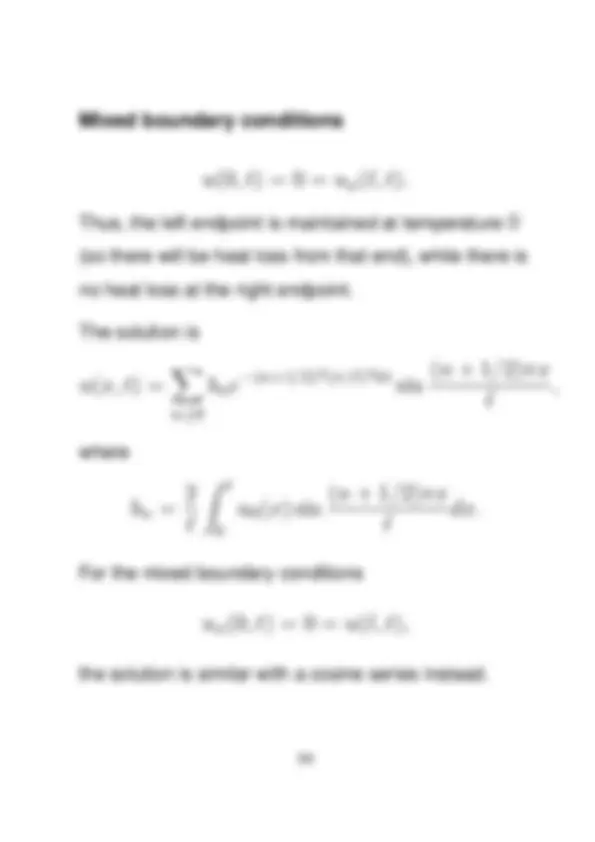
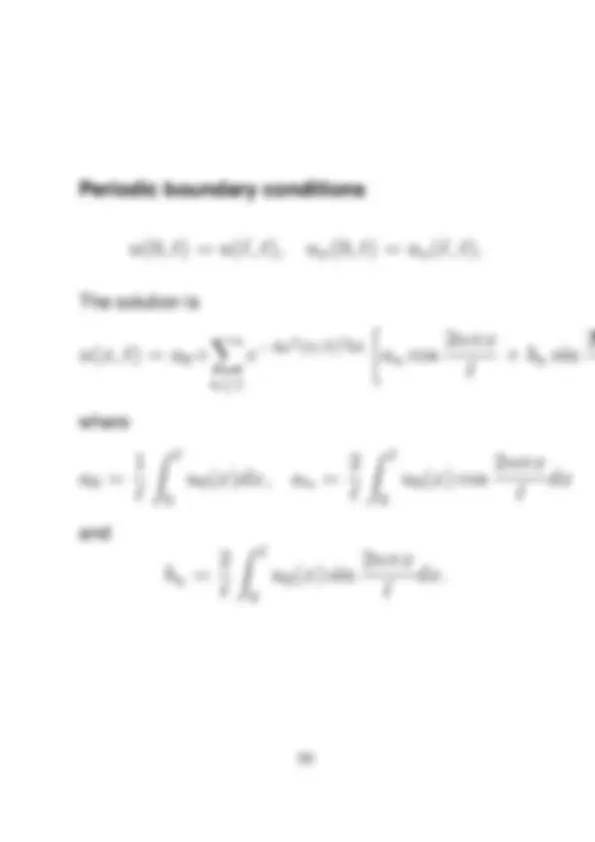
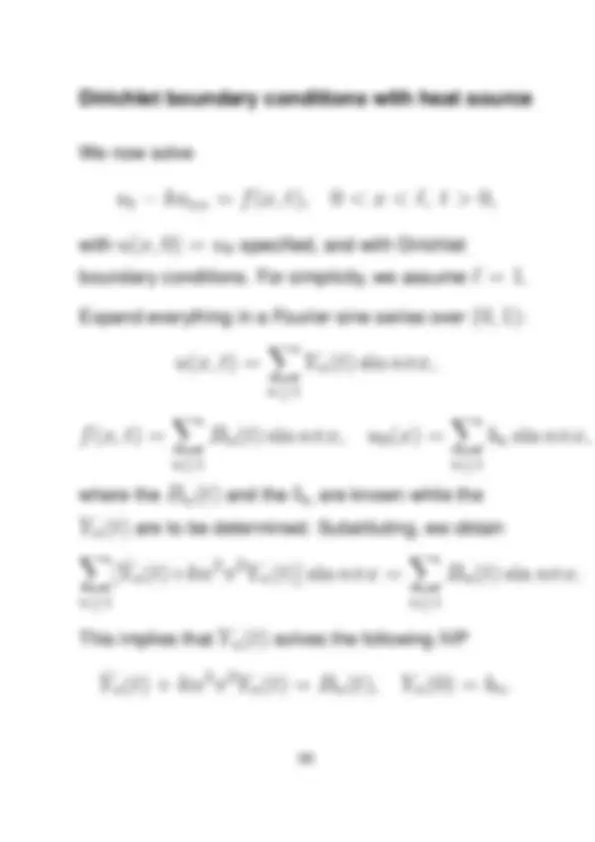

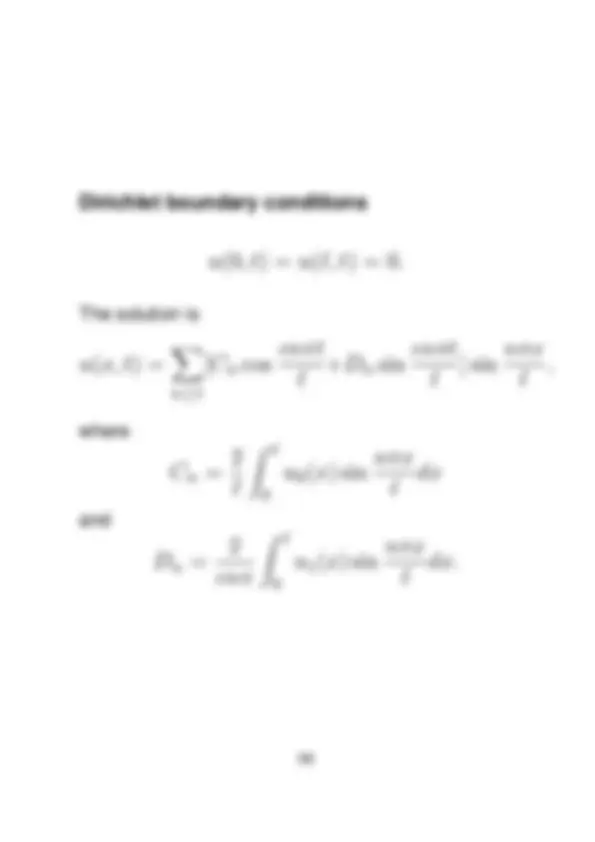
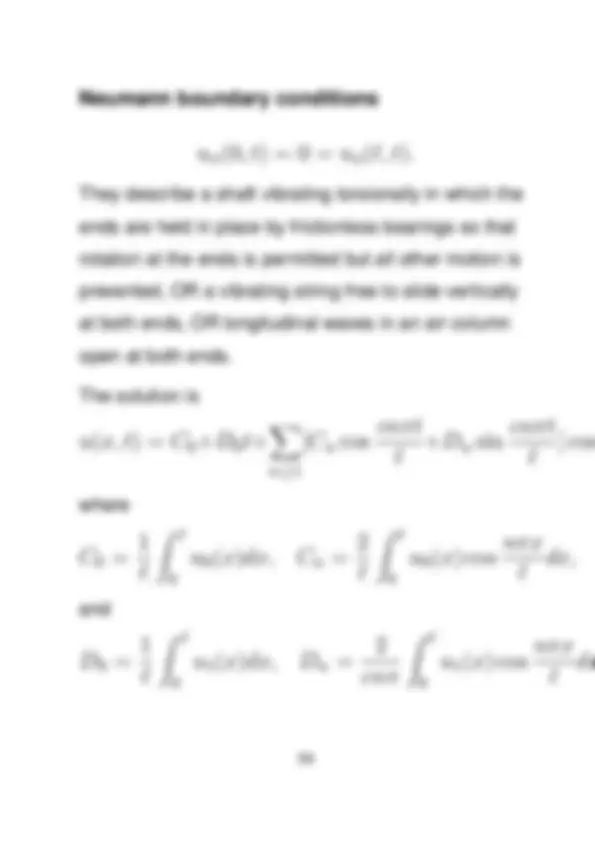
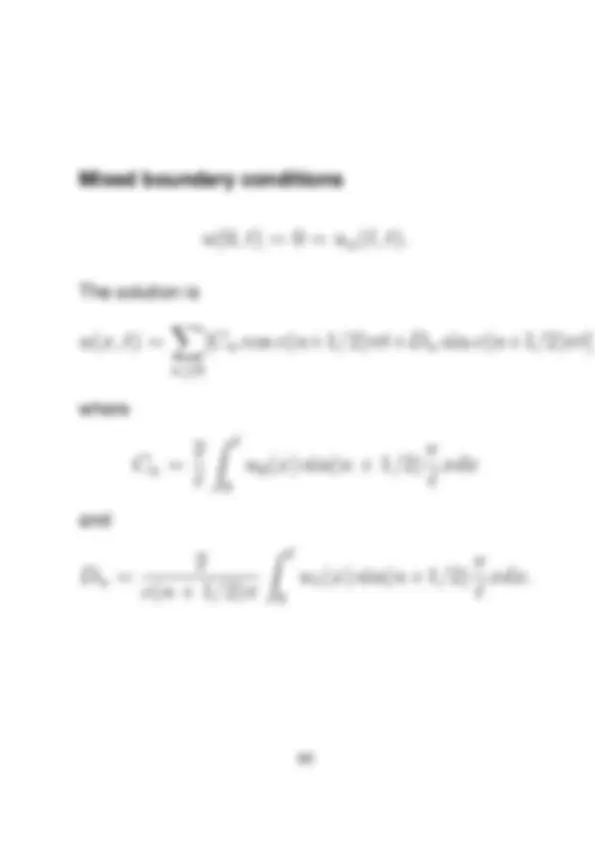
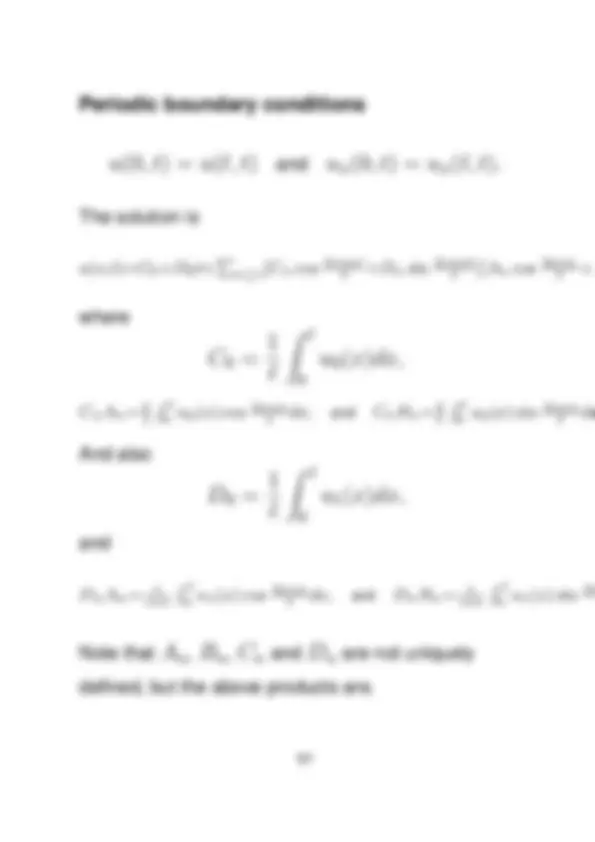
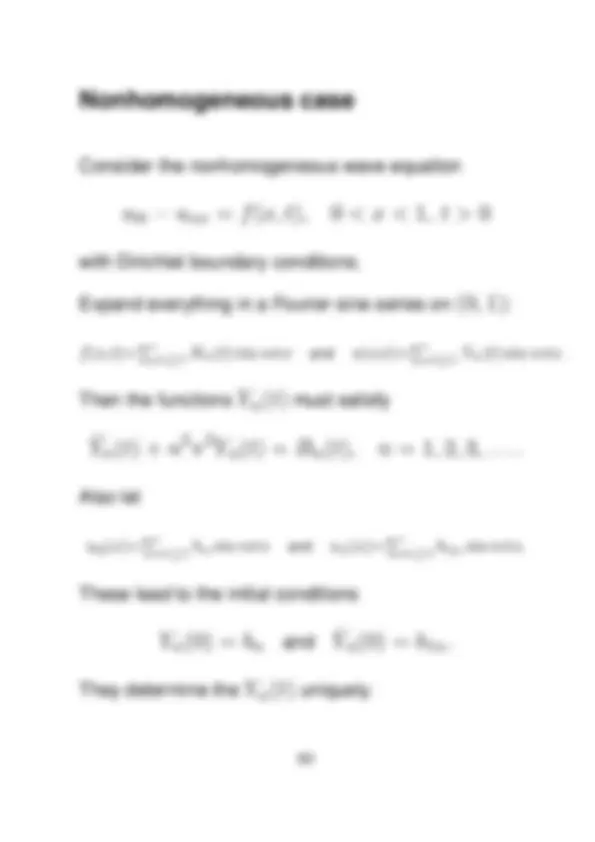
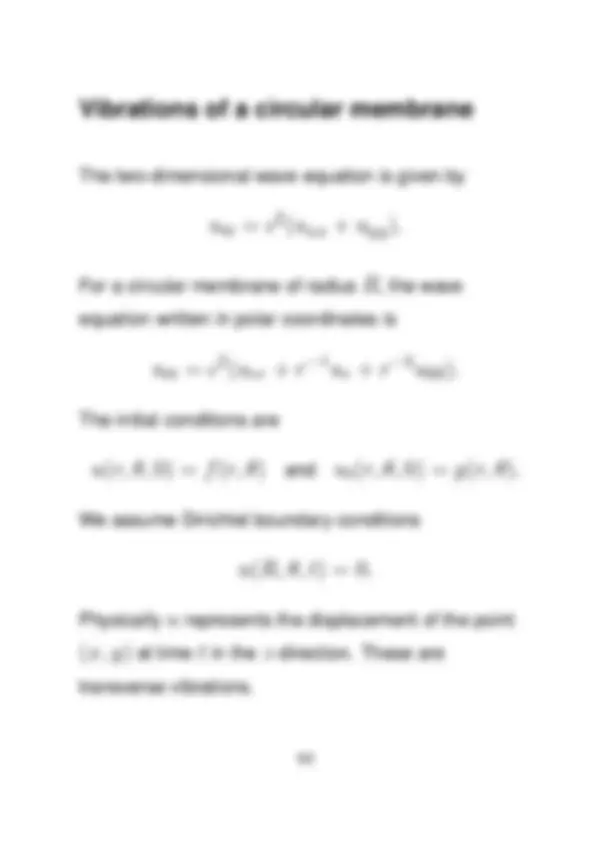
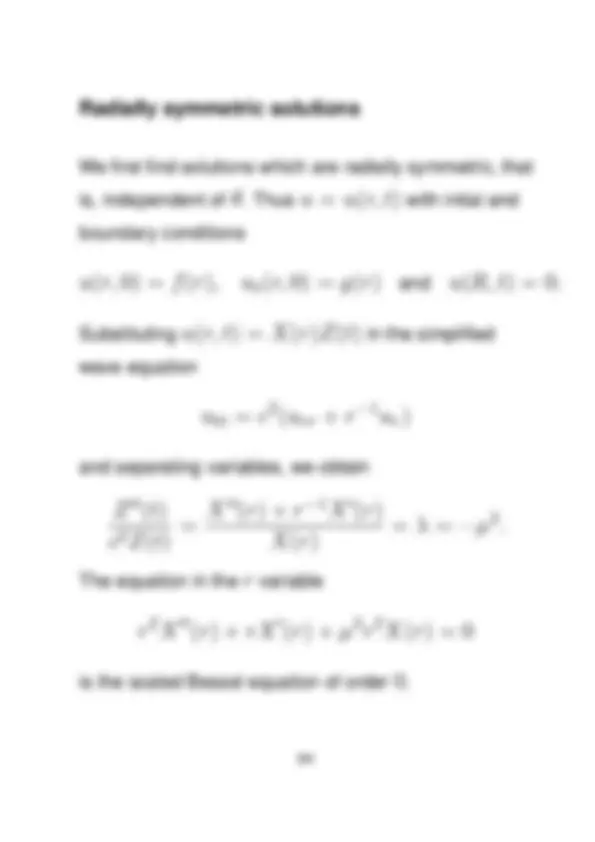
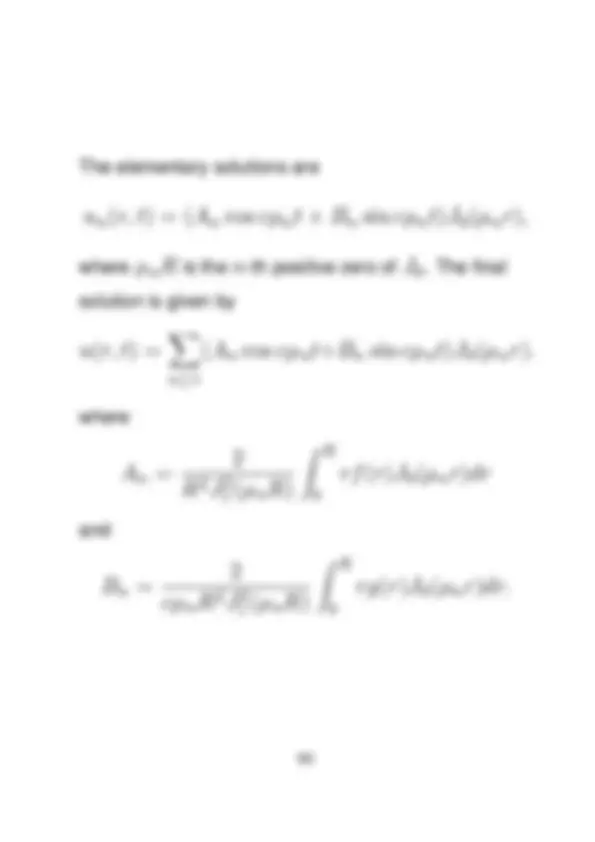
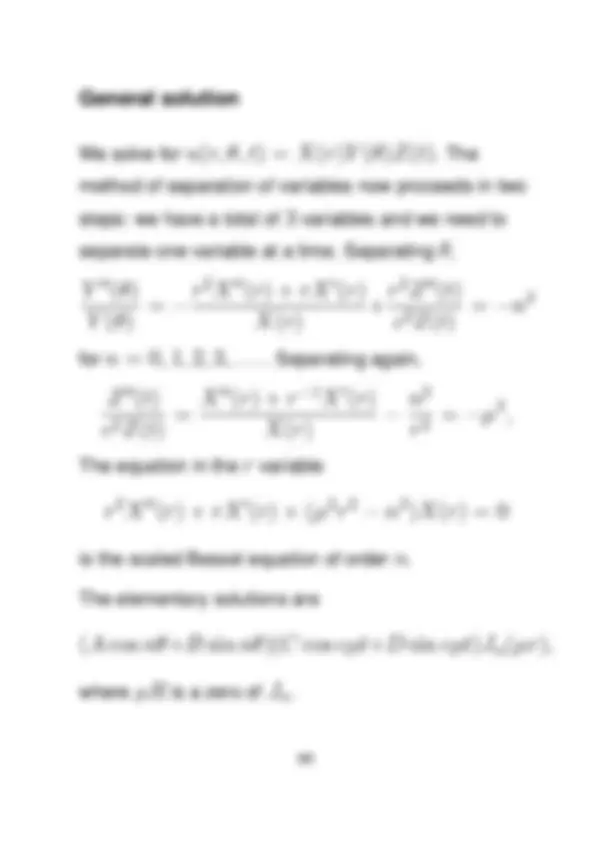
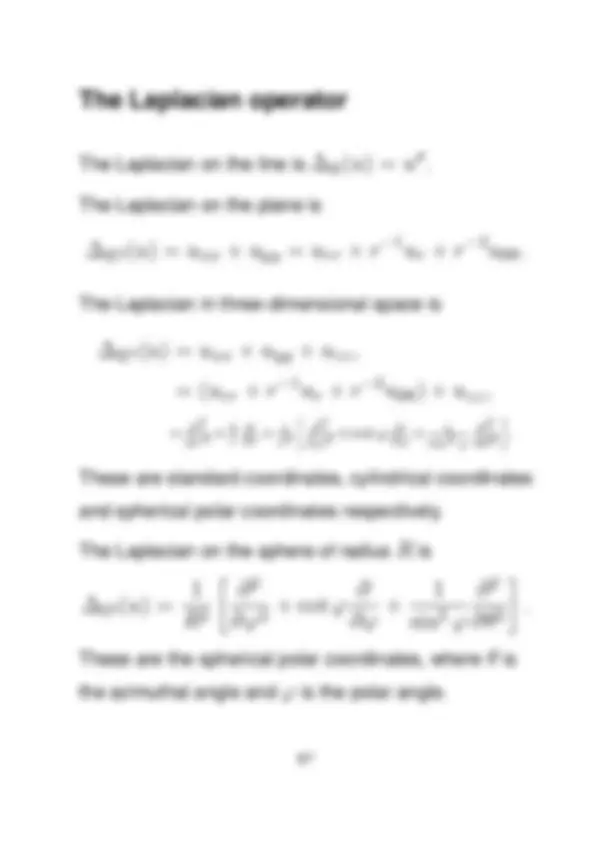
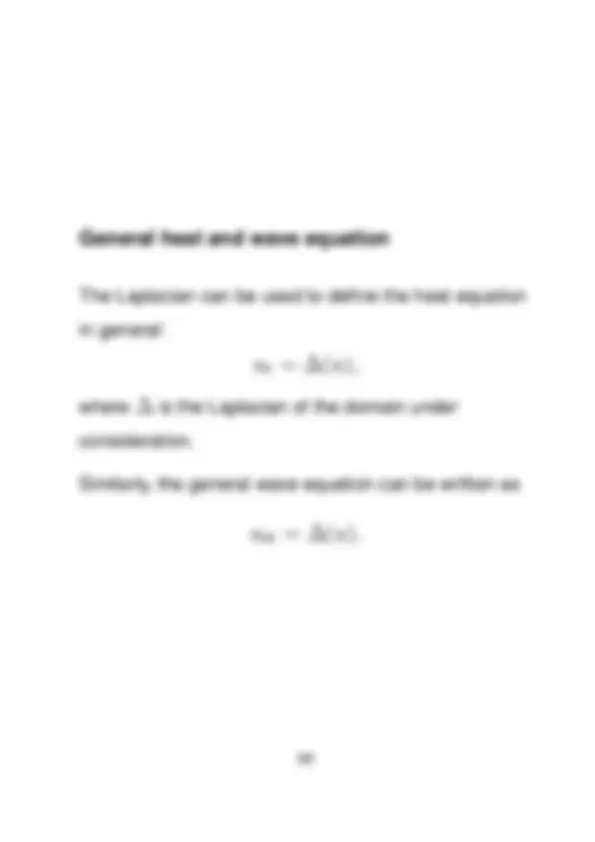
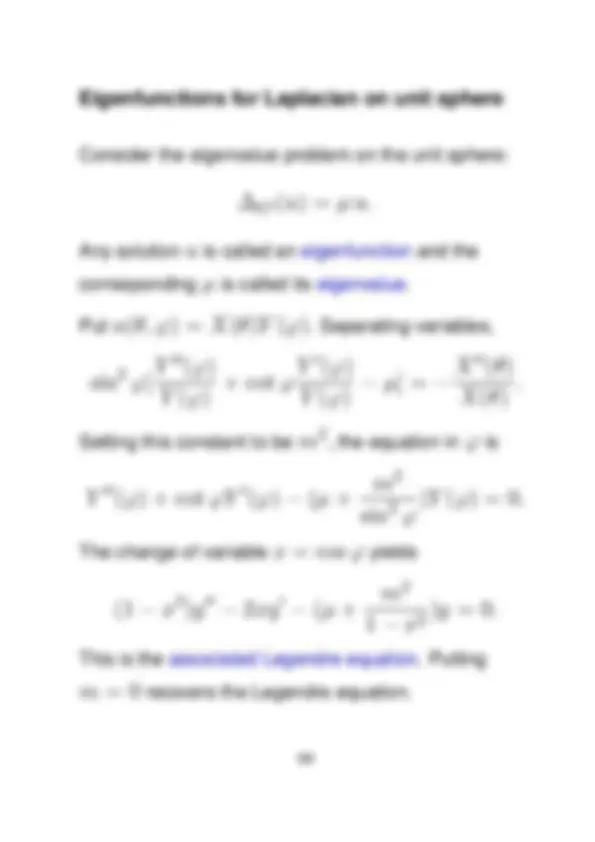
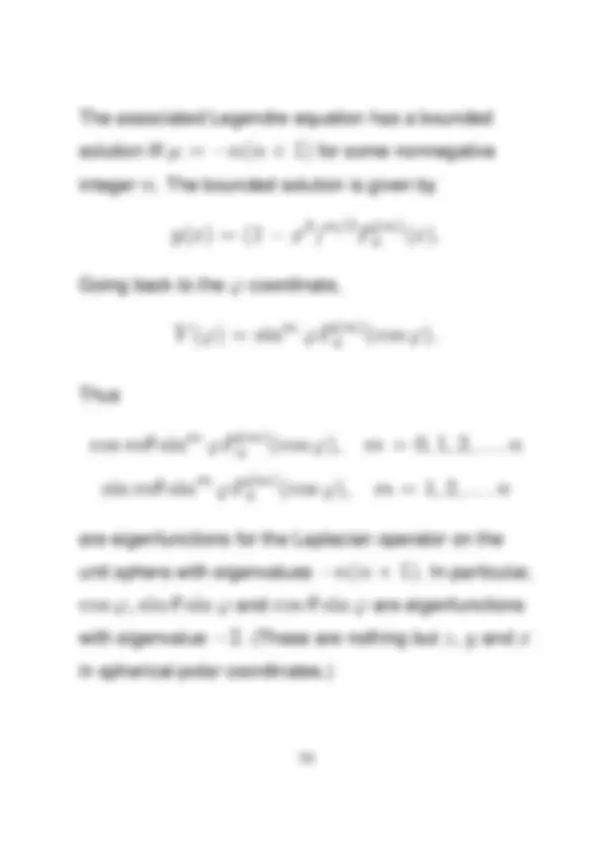
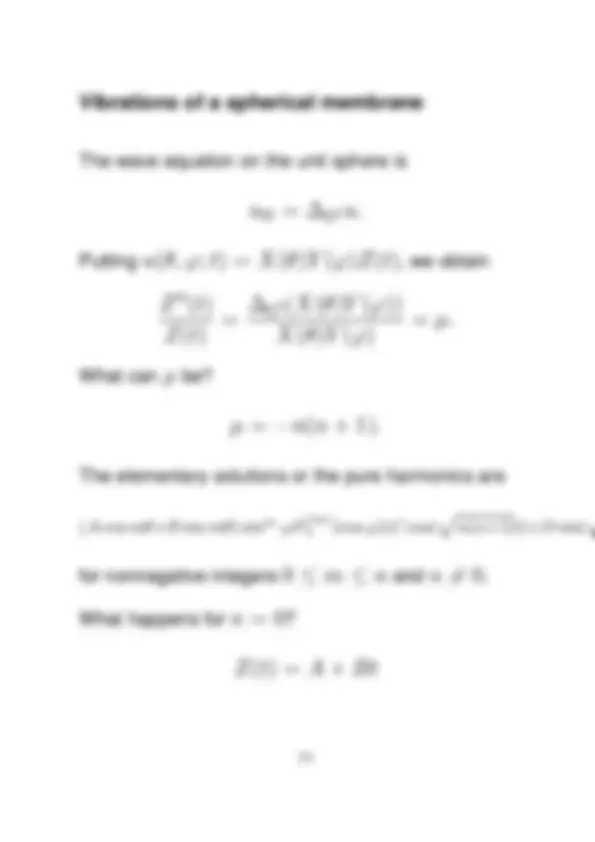
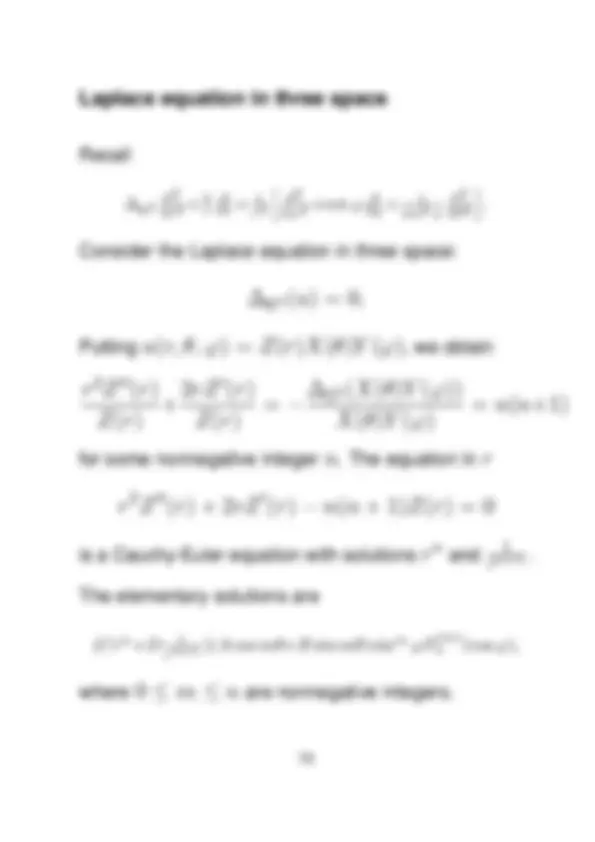



Study with the several resources on Docsity

Earn points by helping other students or get them with a premium plan


Prepare for your exams
Study with the several resources on Docsity

Earn points to download
Earn points by helping other students or get them with a premium plan
Community
Ask the community for help and clear up your study doubts
Discover the best universities in your country according to Docsity users
Free resources
Download our free guides on studying techniques, anxiety management strategies, and thesis advice from Docsity tutors
IIT Bombay Summary of Advanced Differential Equations
Typology: Summaries
1 / 73

This page cannot be seen from the preview
Don't miss anything!


































































Partial differential equations
Swapneel Mahajan
www.math.iitb.ac.in/˜swapneel/
For a real number x 0 and a sequence (an) of real numbers, consider the expression ∑^ ∞
n=
an(x−x 0 )n^ = a 0 +a 1 (x−x 0 )+a 2 (x−x 0 )^2 +....
This is called a power series in the real variable x. The number an is called the n-th coefficient of the series and x 0 is called its center. For instance, ∑^ ∞
n=
n + 1 (x−1)
n (^) = 1+^1 2 (x−1)+
3 (x−1)
is a power series in x centered at 1 and with n-th coefficient equal to (^) n+1^1.
convergence. Denoting this function by f , we may write
f (x) =
n=
an(x − x 0 )n, |x − x 0 | < R.
Let us assume R > 0. It turns out that f is infinitely differentiable on the interval of convergence, and the successive derivatives of f can be computed by differentiating the power series on the right termwise. From here one can deduce that
an = f^
(n)(x 0 ) n!.
Thus, two power series both centered at x 0 take the same values in some open interval around x 0 iff all the corresponding coefficients of the two power series are equal.
Let R denote the set of real numbers. A subset U of R is said to be open if for each x 0 ∈ U , there is a r > 0 such that the open interval |x − x 0 | < r is contained in U.
Let f : U → R be a real-valued function on an open set U. We say f is real analytic at a point x 0 ∈ U if
f (x) =
n=
an(x − x 0 )n
holds in some open interval around x 0. We say f is real analytic on U if it is real analytic at all points of U. In general, we can always consider the set of all points in the domain where f is real analytic. This is called the domain of analyticity of f.
Just like continuity or differentiability, real analyticity is a local property.
Consider the initial value problem
p(x)y′′+q(x)y′+r(x)y = g(x), y(a) = y 0 , y′(a) = y 1
where p, q, r and g are real analytic functions in an interval containing the point a, and y 0 and y 1 are fixed. Theorem. Let r > 0 be less than the minimum of the radii of convergence of the functions p, q, r and g expanded in power series around a. Assume that p(x) 6 = 0 for all x ∈ (x 0 − r, x 0 + r). Then there is a unique solution to the initial value problem in the interval (x 0 − r, x 0 + r), and moreover it can be represented by a power series
y(x) =
n=
an(x − x 0 )n
whose radius of convergence is at least r.
There is an algorithm to compute the power series representation of y:
Plug a general power series into the ODE, take derivatives of the power series formally, and equate the coefficients of (x − x 0 )n^ for each n to obtain a recursive definition of the coefficients an. The an’s are uniquely determined and we obtain the desired power series solution.
In most of our examples, x 0 = 0 and the functions p, q, r and g will be polynomials of small degree.
Consider the second order linear ODE:
(1 − x^2 )y′′^ − 2 xy′^ + p(p + 1)y = 0.
This is known as the Legendre equation. Here p denotes a fixed real number. The equation can also be written in the form
((1 − x^2 )y′)′^ + p(p + 1)y = 0.
This ODE is defined for all real numbers.
General solution
The coefficients (1 − x^2 ), − 2 x and p(p + 1) are polynomials (and in particular real analytic). However 1 − x^2 = 0 for x = ± 1. These are the singular points of the ODE. Our theorem guarantees a power series solution around x = 0 in the interval (− 1 , 1). It is given by
y(x)=a 0 (1− p(p 2!+1) x^2 + (p(p−2)(p 4!+1)( p+3)x^4 +... ) +a 1 (x− (p−1)( 3!p +2)x^3 + (p−1)(p−3)( 5!p +2)(p+4)x^5 +... ),
where a 0 = y(0) and a 1 = y′(0). It is called the Legendre function. The first series is an even function while the second series is an odd function.
The first few values are as follows.
n Pn(x) 0 1 1 x 2 12 (3x^2 − 1) 3 12 (5x^3 − 3 x) 4 18 (35x^4 − 30 x^2 + 3) 5 18 (63x^5 − 70 x^3 + 15x)
Their graphs in the interval (− 1 , 1) are given below.
The vector space of polynomials
The space of polynomials in one variable is a vector space with basis { 1 , x, x^2 ,... }. Further the space of polynomials carries an inner product defined by
〈f, g〉 :=
− 1 f^ (x)g(x)dx. Note that we are integrating only between − 1 and 1. This ensures that the integral is always finite. The norm of a polynomial is defined by
‖f ‖ :=
− 1 f^ (x)f^ (x)dx
Note this simple consequence of integration by parts: For differentiable functions f and g, if (f g)(b) = (f g)(a), then ∫ (^) b a
f g′dx = −
∫ (^) b a
f ′gdx.
(This process transfers the derivative from g to f .)
Orthogonality of the Legendre polynomials
Since Pm(x) is a polynomial of degree m, it follows that {P 0 (x), P 1 (x), P 2 (x),... } is a basis of the vector space of polynomials. Further, ∫ (^1) − 1
Pm(x)Pn(x)dx =
0 if m 6 = n, 2 n^2 +1 if^ m^ =^ n. Thus, the Legendre poynomials form an orthogonal basis. The norms are not 1 , hence the basis is not orthonormal.
Orthogonality can be established using the technique of derivative-transfer.
Lemma. In any inner product space, suppose {u 1 , u 2 ,... , un} and {v 1 , v 2 ,... , vn} are two orthogonal systems of vectors such that for each 1 ≤ k ≤ n, the span of u 1 ,... , uk equals the span of v 1 ,... , vk. Then ui = civi for each i for certain nonzero scalars ci.
By convention Pn(1) = 1 while qn(1) = 2nn!, so we deduce
Pn(x) = (^2) n^1 n!^ (^ dxd^ )n(x^2 − 1)n.
This is known as Rodrigues formula.
Fourier-Legendre series
A function f (x) on [− 1 , 1] is square-integrable if ∫ (^1) − 1
f (x)f (x)dx < ∞.
For instance, polynomials, continuous functions, piecewise continuous functions are square-integrable. The set of all square-integrable functions on [− 1 , 1] is a vector space. The inner product on polynomials extends to square-integrable functions. The Legendre polynomials no longer form a basis for this larger space, but they form a maximal orthogonal set. This allows us to expand any square-integrable function f (x) on [− 1 , 1] in a series of Legendre polynomials
f (x) ≈
n≥ 0
cnPn(x),
where
cn =^2 n^2 + 1
− 1
f (x)Pn(x)dx.